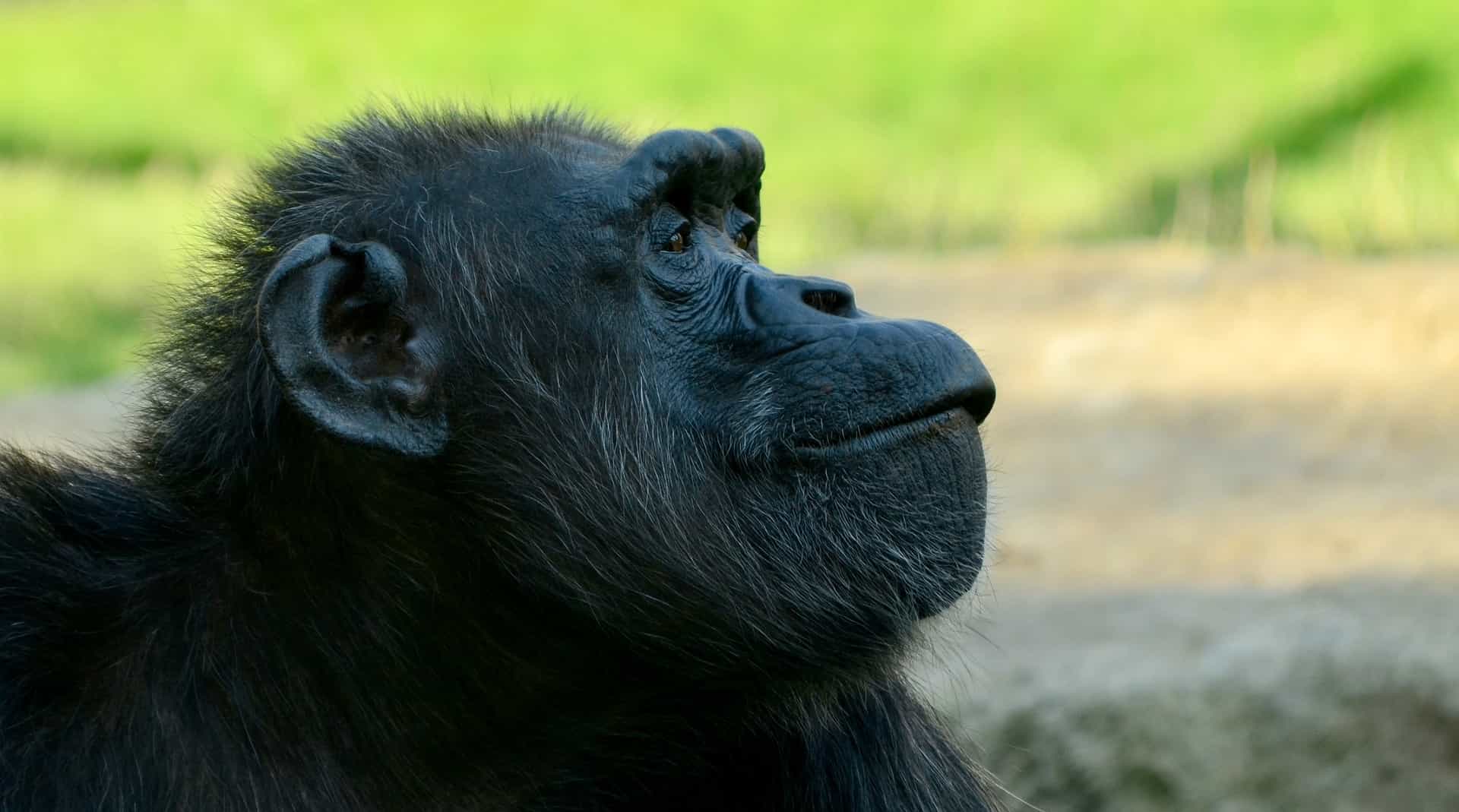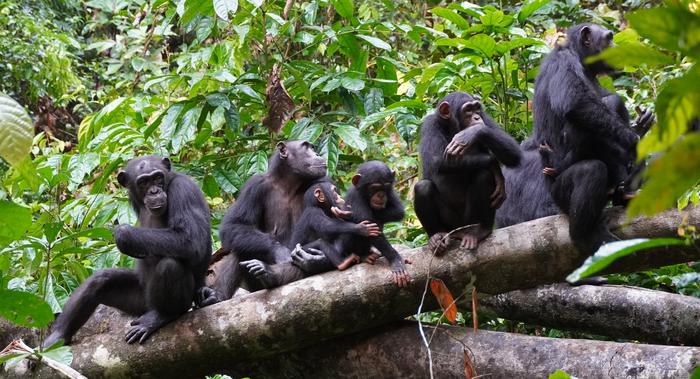
Turns out chimpanzees might have more in common with us than we think, even when it comes to military tactics.
In the dense West African forests of Côte d’Ivoire, a new study has revealed tactical behavior among chimpanzees, our closest evolutionary kin, similar to our own. Thought to be a strategy unique to humans, chimpanzees have now been observed using high ground to spy on rival groups, potentially to avoid direct confrontation and assess risks of “intergroup conflict”. Over three years, researchers tracked 58 chimpanzees, accumulating over 21,000 hours of observation.
“Tactical warfare is considered a driver of human evolution,” said Sylvain Lemoine, a biological anthropologist from the University of Cambridge’s Department of Archaeology, and lead study author. “This chimpanzee behavior requires complex cognitive abilities that help to defend or expand their territories, and would be favored by natural selection.”
Chimp boarder patrol
The study closely followed two neighboring chimpanzee groups. Researchers noticed that the primates displayed a behavior reminiscent of a time-tested human military tactic: securing a higher vantage point to monitor potential threats. The chimpanzees were twice as likely to climb hills near the contentious borders between their territories compared to areas within their domain.
While atop these border hills, rather than foraging or making noise, the chimpanzees displayed a quiet demeanor. The research team theorizes this allows the primates to listen intently for the distant sounds of rival groups. By gauging the distance of these rivals from their elevated position, the chimpanzees can then strategically advance or retreat, aiming to minimize dangerous confrontations. Although other mammals like meerkats use elevated terrains as vantage points against predators or to communicate, what makes this discovery exceptional is the strategic intention behind it.

“Exploiting the landscape for territorial control is deeply rooted in our evolutionary history,” Lemoine said. “In this use of war-like strategy by chimpanzees we are perhaps seeing traces of the small-scale proto-warfare that probably existed in prehistoric hunter-gatherer populations.”
This study was carried out at the Taï Chimpanzee Project, one of the rare sites where multiple wild chimpanzee communities are observed simultaneously. Using GPS trackers, the researchers recreated territorial maps, even verifying topography with old French colonial maps.
Lemoine says one particularly interesting observation is the behavior of chimpanzees during their “border patrols”. These patrols resemble a synchronized hunt. The chimpanzees, in subgroups, limit their noise and move in harmony, covering their territories.
They frequently return to certain hills near the border known as “inselbergs” for their reconnaissance missions. Lemoine likens these locations not to “lookout points”, but to “listen-out points” due to their auditory advantages. The further away the rival noises were, the more likely they were to advance into rival territory. For instance, there was a 60% likelihood of them venturing into enemy terrain if the rivals were detected at 3,000 meters.
Lemoine explains that expanding territory can directly increase food availability and mating opportunities. Larger territories reduce inter-group pressures, potentially leading to higher birth rates. While the chimps primarily used hilltop surveillance to reduce conflicts, there were instances of violent confrontations, sometimes resulting in kidnappings and fatalities.
“Occasionally, raiding parties of two or three males venture deep into enemy territory, which can lead to fighting. Confrontations between rival chimpanzees are extremely noisy. The animals go into an intimidating frenzy, screaming and defecating and gripping each other’s genitals.”
It seems the boundaries between human and animal intelligence are becoming increasingly hazy as the strategic intricacies previously thought to be unique to human cognition are now seen in our primate kin.
The findings appeared in the journal PLOS Biology.






